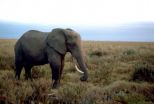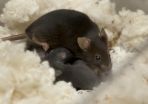(Press-News.org) SAN FRANCISCO--For many generations, Bedouin people living in the Abu Dabbab area on the Egyptian Red Sea coast have heard distinct noises--like the rumbling of a quarry blast or cannon shot--accompanying small earthquakes in the region. Now, a new study published in the Bulletin of the Seismological Society of America offers an explanation for this uniquely noisy seismic event.
Seismic activity in the area of the Egyptian seaside resort Abu Dabbab may be caused by an active fault that lays below a 10-kilometer thick block of old, now rigid igneous rock. The surface of the block slides along the active parts of the fault, lubricated by fluids from the Red Sea that have penetrated the crust, according to Sami El Khrepy of King Saud University in Riyadh, Saudi Arabia and colleagues.
The researchers think this large and rigid block of igneous crust acts as a sort of broadcaster, allowing the full sounds of seismic movement to rise through the rock with little weakening of the acoustic signal. The high-frequency sounds of earthquakes can then be heard by humans at the surface.
Earlier studies had suggested that the Abu Dabbab earthquakes were caused by magma rising through the crust, but the new report "found that a volcanic origin of the seismicity is unlikely, and the area is not expected to be subjected to volcanic hazard," said El Khrepy.
Earthquake swarms are frequent in this area of the northern Red Sea near Abu Dabbab, but most of the earthquakes are weak, ranging in magnitude from 0.3 to 3.5. The largest well-documented earthquakes, measuring magnitude 6.1 and magnitude 5.1, occurred in 1955 and 1984, respectively.
El Khrepy and colleagues decided to take a closer look at the structure of the Abu Dabbab crust, to determine the origin of this seismicity. To peer into the crust, they combined data from local earthquake monitoring with a new set of local and regional earthquake data collected by the National Seismic Network of Egypt (ENSN), which was completed in 2002. They then applied a technique called seismic tomography, which uses data on the speed of seismic waves traveling through different rock types to develop a 3-D map of some of the subsurface geological features in the area.
"This study is the first detailed look at the seismic tomography in this region of Abu Dabbab's cannon earthquakes," said El Khrepy, "It was not possible to do this work without ENSN deployment."
The researchers determined that the earthquakes at Abu Dabbab extend in a line from the coast into the Red Sea, "and the seismicity pattern is arc-shaped in depth, confined to the dome-like structure of the rigid igneous body that formed during the Precambrian era'' above an active fault, El Khrepy said.
The strike-slip and thrust movements of the fault may drive water from the Red Sea in between the fault and the surface of the igneous block, allowing the two to slip past each other, the scientists suggest.
"Based on the new results and also the historical data," El Khrepy concluded, "we report that the confined seismicity in this zone is of tectonic, and not volcanic, origin."
INFORMATION:
(Philadelphia, PA) - It's long been known that scratching evokes a rewarding and pleasurable sensation in patients with chronic itch. Now, researchers in the Department of Dermatology and Temple Itch Center at Temple University School of Medicine (TUSM) may be closer to understanding why.
Using advanced fMRI imaging, the researchers looked at activity in the brain while 10 chronic itch patients and 10 healthy subjects scratched an itch. They found that areas of the brain involved in motor control and reward processing were more activated in chronic itch patients while ...
There is little information about bee populations in Alaska, where native bee pollination is critical to the maintenance of subarctic ecosystems. A team from the University of Alaska Fairbanks and the USDA have now completed a two-year study on bumble bees in agricultural areas in the region. The research was published in the Biodiversity Data Journal.
Pollination is one of the most fundamental processes sustaining agricultural production and natural ecosystems. While decrease in bee populations is a common concern, most press coverage has been directed towards Colony ...
Recent genomic research has prompted a petition that calls for the reclassification of African elephants from one threatened species to two endangered species to protect both from imminent extinction.
The U.S. Fish and Wildlife Service (FSW) has 90 days to respond to a petition from the Center for Biological Diversity at http://www.biologicaldiversity.org, a public interest environmental organization dedicated to the protection of native species and their habitats. The Center requests that the FWS recognize the forest elephant (Loxodonta cyclotis) and savannah elephant ...
A strain of bacteria that "breathes" uranium may hold the key to cleaning up polluted groundwater at sites where uranium ore was processed to make nuclear weapons.
A team of Rutgers University scientists and collaborators discovered the bacteria in soil at an old uranium ore mill in Rifle, Colorado, almost 200 miles west of Denver. The site is one of nine such mills in Colorado used during the heyday of nuclear weapons production.
The research is part of a U.S. Department of Energy program to see if microorganisms can lock up uranium that leached into the soil years ...
Zinc plays an important role in a woman's ability to successfully breast-feed her child, according to health researchers.
It has long been known that zinc, an essential trace element, is passed to infants through mother's breast milk. The levels of zinc in mother's milk and the effects of zinc deficiency in infants have been previously studied, but the role of zinc in breast development and function in lactating mothers is a relatively new area of research.
The protein ZnT2 transports zinc in specific tissues in the body, including the mammary glands. Shannon L. Kelleher ...
This news release is available in German. ETH material engineers found that the performance of ion-conducting ceramic membranes that are so important in industry depends largely on their strain and buckling profiles. For the first time, scientists can now selectively manipulate the buckling profile, and thus the physical properties, allowing new technical applications of these membranes.
"Ionics, ion-based data processing and energy conversion, is the electronics of the future", says Jennifer Rupp, a professor of Electrochemical Materials at ETH Zurich, and therewith ...
WASHINGTON, D.C. - The high seas of Mars may never have existed, according to a new study that looks at two opposite climate scenarios of early Mars and suggests that a cold and icy planet billions of years ago better explains water drainage and erosion features seen on the planet today.
For decades, researchers have debated the climate history of Mars and how the planet's early climate led to the many water-carved channels seen today. The idea that 3 to 4 billion years ago Mars was once warm, wet and Earth-like with a northern sea -- conditions that could have led ...
Researchers who paired Siamese fighting fish in mock fights found that winning fish could supply more energy to their muscles during fights than losing fish.
The findings link the invisible processes going on inside cells to tangible consequences in the visible world, and they show how a behavior such as aggression can be affected by underlying biochemical processes that help sustain an animal's life.
"Conspicuous adaptations like antlers are usually what come to mind when thinking about traits that maximize success in aggressive interactions, but as these interactions ...
Rich, creamy, nutritious and now cancer fighting. New research reveals that molecules derived from avocados could be effective in treating a form of cancer.
Professor Paul Spagnuolo from the University of Waterloo has discovered a lipid in avocados that combats acute myeloid leukemia (AML) by targeting the root of the disease - leukemia stem cells. Worldwide, there are few drug treatments available to patients that target leukemia stem cells.
AML is a devastating disease and proves fatal within five years for 90 per cent of seniors over age 65. Spagnuolo's new avocado-derived ...
The world's first study into the brain anatomy of a marine reptile that lived at the same time as the dinosaurs sheds light on how the reptilian brain adapted to life in the oceans.
The fossils of ichthyosaurs, which lived 150 to 200 million years ago, are often very well preserved, but they are commonly flattened. Now investigators have used computed tomography to create a 3-D scan of the animal's skull, revealing internal details of the palate and braincase that usually cannot be seen. A reconstruction of the brain shows the importance of vision for the predator, which ...




